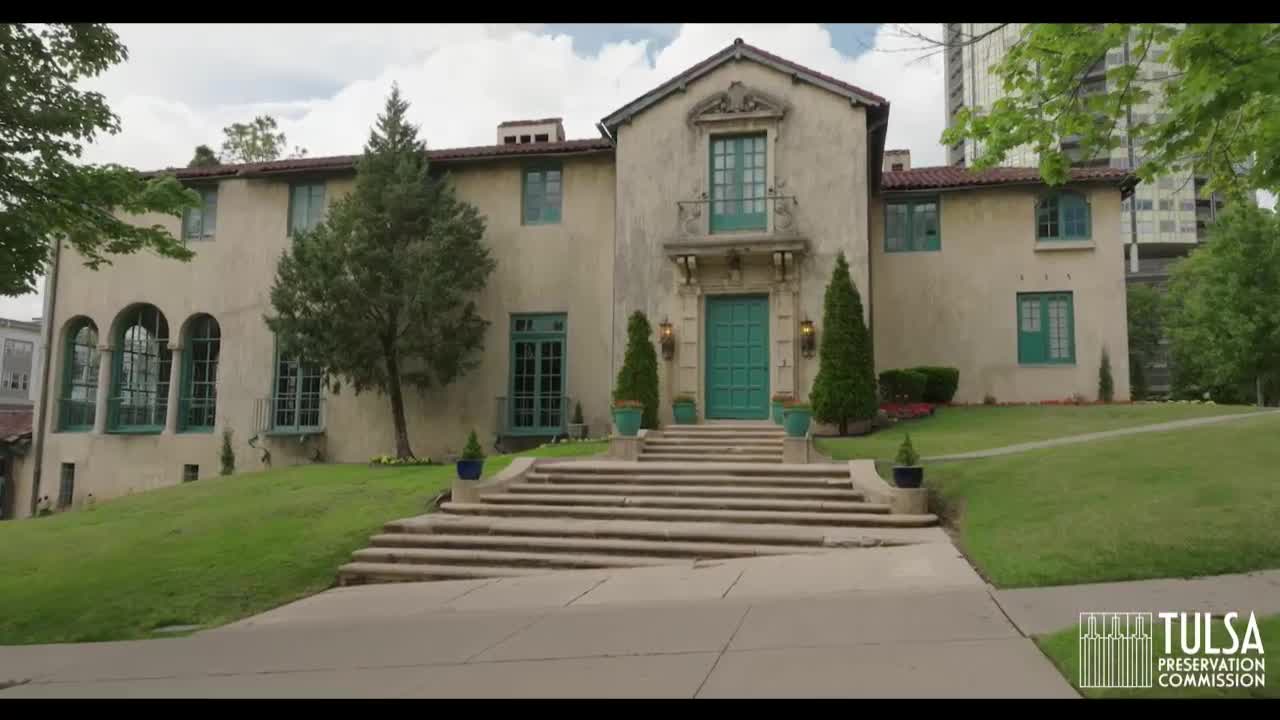Exploring Tulsa's Historic Riversides With Harwelden Dresser and Lee Clinton Mansions
August 28, 2025 | Tulsa, Tulsa County, Oklahoma
This article was created by AI summarizing key points discussed. AI makes mistakes, so for full details and context, please refer to the video of the full meeting. Please report any errors so we can fix them. Report an error »

The recent episode of a historic preservation series highlighted Tulsa's enduring relationship with the Arkansas River through its iconic riverside estates. For over a century, the river has influenced the city's layout and aesthetic, with historic homes serving as landmarks of art, industry, and civic life.
The episode featured three notable properties. First was the Harwelden Mansion, an English Tudor-style estate built in 1923 by oilman Earl Harwell. This grand manor boasts gothic arches and intricate hand-carved details, with a facade of brick and stone leading to a slate roof. Inside, it features custom furnishings and one of Tulsa's earliest residential elevators. Today, Harwelden operates as a cultural and event center, hosting weddings and concerts with stunning river views.
Next was the Lee Clinton House, a colonial revival home constructed in 1919. Once owned by civic leader Lee Clinton, founder of Union National Bank, this elegantly preserved residence reflects refined taste and quiet confidence. It remains one of the few original homes along Riverside Drive, maintaining its historic charm.
Lastly, the Dresser Mansion, built in 1919 for oil executive Carl Dresser, showcases Italian Renaissance design with Mediterranean elements. Known for its lavish parties and scenic views, the mansion has been restored and continues to serve as a venue for celebrations, echoing its original purpose.
These properties not only represent Tulsa's architectural heritage but also illustrate how the Arkansas River has shaped the city's identity. The episode invites viewers to explore these historic sites, emphasizing the importance of preserving Tulsa's legacy intertwined with nature and beauty.
The episode featured three notable properties. First was the Harwelden Mansion, an English Tudor-style estate built in 1923 by oilman Earl Harwell. This grand manor boasts gothic arches and intricate hand-carved details, with a facade of brick and stone leading to a slate roof. Inside, it features custom furnishings and one of Tulsa's earliest residential elevators. Today, Harwelden operates as a cultural and event center, hosting weddings and concerts with stunning river views.
Next was the Lee Clinton House, a colonial revival home constructed in 1919. Once owned by civic leader Lee Clinton, founder of Union National Bank, this elegantly preserved residence reflects refined taste and quiet confidence. It remains one of the few original homes along Riverside Drive, maintaining its historic charm.
Lastly, the Dresser Mansion, built in 1919 for oil executive Carl Dresser, showcases Italian Renaissance design with Mediterranean elements. Known for its lavish parties and scenic views, the mansion has been restored and continues to serve as a venue for celebrations, echoing its original purpose.
These properties not only represent Tulsa's architectural heritage but also illustrate how the Arkansas River has shaped the city's identity. The episode invites viewers to explore these historic sites, emphasizing the importance of preserving Tulsa's legacy intertwined with nature and beauty.
View full meeting
This article is based on a recent meeting—watch the full video and explore the complete transcript for deeper insights into the discussion.
View full meeting
